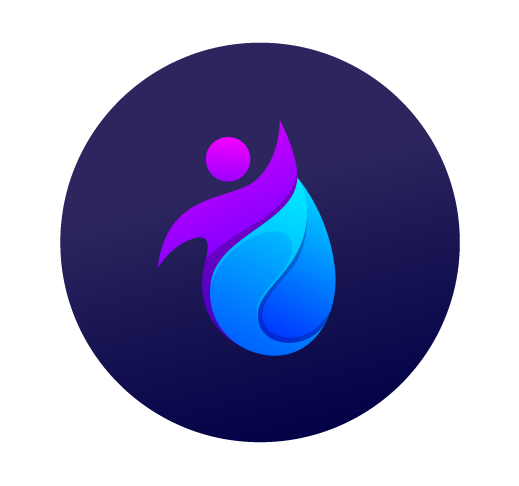Everyone knows LinkedIn sits at the intersection of digital networking and professional growth, but few maximize its unique strengths in job hunting to find real, lasting results.
Solid LinkedIn strategies can spotlight your skills among countless applicants. When the market feels saturated, standing out during job hunting changes the game for motivated professionals.
This guide details practical, expert-approved moves anyone can follow – from small tweaks to larger pivots – for better job hunting outcomes with LinkedIn.
Create a Winning First Impression on LinkedIn Profiles
Your profile serves as a billboard for job hunting. Nail your first impression and recruiters pause longer, increasing your chance of moving into the candidate pipeline.
Consistent effort polishing each section pays off. Job hunting success relies on visibility, clarity, and alignment with opportunities a recruiter is actually searching for.
Optimize Headline for Discoverability and Approachability
A clear, keyword-rich headline makes recruiters notice you during a job hunting search. Write it using language a hiring manager would use in a job description.
When someone scans your headline, clear role targets and industry focus jump out. For example, use “Marketing Analyst | Digital Brand Growth | Data-Driven Storyteller” instead of vague generalizations.
Imagine a recruiter says aloud, “I found a data-driven analyst.” Your headline should make this sentence true for the jobs you want to attract.
Polish Your Profile Photo and Banner for Professional Appeal
Your profile photo is the digital handshake. Choose a bright, neutral photo with a friendly expression and professional attire—nothing cropped or with blurry backgrounds.
For your banner, use graphics that complement your sector. For instance, someone in technology might pick a clean cityscape or a code-themed design to reinforce their focus.
After uploading, view your profile logged out. Would you engage with this candidate for job hunting? If yes, you’re set. If not, refresh and repeat.
| Profile Section | Action Needed | Common Mistake | Best Next Step |
|---|---|---|---|
| Headline | Add job hunting keywords | Too generic, lacks focus | Update with clear job title targets |
| Photo | Use high-resolution portrait | Blurry, unprofessional apparel | Swap for a fresh, professional shot |
| Banner | Brand with industry visuals | Default or off-topic images | Upload something related to your field |
| About | Tell your story with results | Too brief or all buzzwords | Detail key wins and aspirations |
| Experience | Quantify achievements | Job descriptions copied verbatim | Add metrics and outcomes |
Strengthen Your Network with Purposeful Connections
Making targeted, meaningful connections amplifies job hunting power overnight. The right mix of connections exposes you to recruiters, referrals, and timely openings.
Sending generic connection requests weakens your impression. Instead, personalize each invite so recipients understand why connecting adds value to both of you.
Craft Personalized Messages for Each Connection
Personalized messages set you apart, especially during job hunting. Reference a shared interest or mutual contact, using clear, polite phrasing that explains your intent.
For example, you might write, “Hi Jesse, I noticed we both follow [Industry Leader]. I’m exploring new roles and would value connecting with you.” Friendly, relevant, and leaves a professional impression.
- Review every potential connection’s profile, ensuring relevance for job hunting, to avoid superficial networks. Opt for genuine shared interest or industry overlap, not just numbers.
- Choose mutual industry groups or connections as conversation starters. If you both attend a webinar, say, “Enjoyed the event, thought we could connect here too” for instant rapport.
- Use the “Add a note” feature for every invite. Respect their time by keeping messages concise yet customized. This establishes trust right from the start of job hunting dialogues.
- Follow up if they accept, thanking them and suggesting one actionable next step, such as, “Let’s share relevant opportunities if we spot any.” This builds momentum immediately.
- Track connection outcomes in a spreadsheet. Log who responds positively or provides referrals – job hunting becomes more organized when you measure impact along the way.
Small actions like these result in real, lasting connections that boost your job hunting visibility and open doors to introductions or hidden roles.
Join Active, Relevant Groups That Reflect Your Goals
LinkedIn groups attract thought leaders and those hiring in your industry. Target groups with frequent discussion, visible admins, and recent job postings.
Introduce yourself after joining: mention your expertise and what job hunting strategies you’re exploring. Active participation—liking, posting, or commenting—makes members see you as a valuable peer.
- Post focused questions about skill-building. If targeting marketing, ask, “What analytics tools do recent job hunting hires need now?” You gather insight while positioning yourself as informed.
- Offer support to others: respond to job seekers with practical suggestions. This displays generosity and attracts people who reciprocate, strengthening your network for future job hunting.
- Keep notifications on for group activity. Respond within 12-24 hours, showing reliability. Recruiters notice regular contributors when group members recommend someone for an opening.
- Share industry news or insights. Add brief commentary, like “This merger may affect hiring trends.” Being first with timely information adds credibility and job hunting momentum.
- Ask group admins about upcoming virtual meetups. These sessions provide direct access to recruiters or internal referral programs that don’t always reach job boards.
Every group connection multiplies job hunting opportunities and makes your skills visible to the people shaping industry decisions and hiring outcomes.
Use Content to Highlight Your Expertise and Attract Recruiters
Sharing well-crafted posts demonstrates expertise. Regular, on-brand activity makes a job hunting candidate more visible to hiring managers monitoring their feed for talent.
When job hunting, align posts with your field—share project wins, industry reflections, or skills you’re building. The right content leads to direct outreach from recruiters looking for active contributors.
Consistent Post Frequency Builds Interest and Trust
Set a manageable posting schedule. Once a week works for most people—the consistency keeps your name circulating in professional networks, growing visibility during job hunting.
Alternate post types to keep your audience engaged. Use quick tips, longer reflections, and industry news links, adjusting tone to maintain relatability and relevance for job hunting topics.
If you skip a week, don’t apologize. Pick up again with a post about a recent learning experience, demonstrating resilience and continuous development—a key trait for job hunting candidates.
Share Real-World Problem Solving Stories from Your Career
Describe a specific challenge you encountered, such as increasing sales conversion rates on a small budget. Use clear, active language and break the solution down.
“While job hunting last quarter, I joined a project that upgraded our CRM. We improved sales demo bookings by 40%.” Numbers lend credibility and give insight into your job hunting ambitions and results.
End these stories with a direct takeaway: “If you’re solving similar problems or have roles where these skills fit, I welcome connecting for job hunting opportunities.” This invites engagement that matters.
Make Every Application Count by Leveraging LinkedIn Tools
Applying through LinkedIn brings job hunting closer to the source—often before positions hit external boards. Use available tools for efficient, tailored applications employers notice.
Start each application with a clear strategy: research the company, scan employee profiles, and update your summary to match specific job hunting targets.
Use the “Easy Apply” Feature Without Losing Personal Touch
While “Easy Apply” speeds things up, avoid sending a generic resume. Always tweak your summary and attach a new copy tailored for each job hunting target.
Add a custom message for the recruiter. “My analytics background fits the open Operations Analyst role, and I’m eager to discuss how I can help deliver measurable results.” Brief, but memorable.
- Save custom searches for roles. Set alerts to catch new job hunting opportunities fast, beating the rush. Fine-tune settings monthly, adjusting for title or skill shifts as the market evolves.
- Keep track of company news or change. When firms announce funding rounds, layoffs, or new leadership, job hunting applicants can reference these updates in outreach messages to stand out as proactive.
- Follow companies you admire. This not only fine-tunes your job hunting feed, but signals intent to recruiters that you’re aligned with the company’s culture and vision.
- Engage with hiring managers’ posts. Leave thoughtful responses, not just likes. Sharing a brief insight from your job hunting experience or skills makes you more memorable during screening.
- Review the “People Also Viewed” sidebar on job postings. Looking at these candidates helps benchmark your skills and motivates continuous profile improvement during prolonged job hunting stretches.
Use LinkedIn’s analytics to track which types of applications get responses. Over time, invest your job hunting energy into what works best for your sector.
Strengthen Your Impact with Customized Recommendations
Personalized recommendations reinforce your skills and elevate your credibility. Targeted endorsements and written references signal you’re a serious job hunting contender deserving recruiter trust.
Request recommendations right after positive collaborations—timeliness yields detailed, authentic feedback, which boosts your profile in competitive job hunting markets.
Guide Colleagues with Concrete, Easy-to-Answer Requests
Frame asks with reminders of your shared project success. For example, “Could you mention how we coordinated that event launch under tight deadlines?” This narrows their focus and increases follow-through.
After a direct message, offer to write a draft. “I’m happy to write a template—feel free to edit as you wish.” Make it easy for them, and you’ll receive more job hunting-ready testimonials.
- List your top three projects that connect to skills needed for job hunting targets. Share these achievements with your reference to trigger memory and specificity.
- Be prompt with thank-yous. When someone sends you a recommendation, reply within two days and offer to reciprocate. A strong network grows mutual goodwill and future job hunting opportunities.
- Follow up on promises. If a colleague says they’ll recommend you next week, send a gentle reminder—”Just checking if I can help draft anything.” Help them help you shine for job hunting.
- Share your recommendations on posts occasionally, tagging the reference and thanking them publicly. This signals character, gratitude, and job hunting awareness to your network.
- Plan regular recommendation cycles. Every quarter, set a reminder to request fresh testimonials, ensuring your job hunting credentials remain up-to-date and convincing to prospective employers.
These systems build credibility over time and ensure your job hunting presence stays sharp and relevant no matter how the market shifts.
Sharpen Your Search Using Advanced LinkedIn Filters
Mastering advanced filters narrows the job hunting scope to just the opportunities that truly fit—saving hours and reducing burn-out from endless scrolling.
Experiment with Boolean operators in search fields. For example, type “project manager AND remote” to find positions aligning with your current job hunting requirements.
Segment Search By Geography, Industry, and Mutual Connections
Use the “Location” and “Industry” filters to match job hunting preferences. Sorting by connection level (1st, 2nd, 3rd) reveals which openings could lead to warm introductions.
Map out your top companies by region, then set up recurring notifications for matching roles. This proactive job hunting system ensures you’re first in line for local opportunities.
If you’re relocating, search for alumni employed at target firms in your new city. Message them: “Would love insights on your experience as I explore similar job hunting paths in the area.”
Keep LinkedIn Job Hunting Momentum Alive for Lasting Results
Intentional LinkedIn strategies power consistent job hunting growth. Every tailored post, targeted connection, and well-researched application sharpens your position in a crowded job market.
Integrating advanced filters and persistent engagement multiplies opportunity and ensures that each job hunting move yields lessons, contacts, or direct interviews.
Stay curious, iterate frequently, and treat LinkedIn job hunting as an evolving skill—each action compounds, leading you closer to your next best professional chapter.



